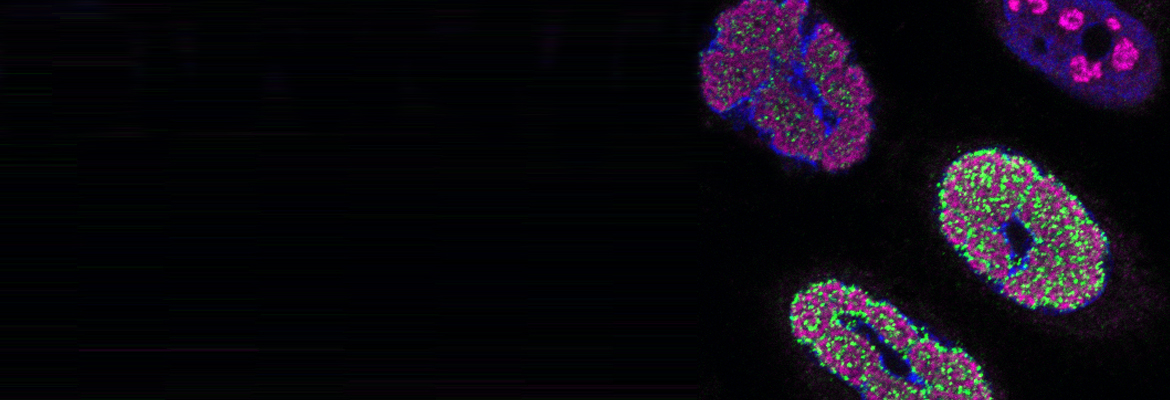HOW CAN WE HELP YOU? Call 1-800-TRY-CHOP
Research Reveals Insights Into Rare and Complex Diseases
Filling the Evidence Gap
"The Delivery Room of the Future Frontier Program aims to generate an evidence base for neonatal resuscitation for infants with congenital anomalies."
Though 10% of all newborns require resuscitation in the delivery room to breathe independently after birth, existing guidelines do not address resuscitation for infants with congenital anomalies. Clinicians rely on standardized approaches that are based on physiologic expectations of infants without anomalies. Children’s Hospital of Philadelphia announced a new Frontier Program led by members of its Division of Neonatology and Center for Fetal Diagnosis and Treatment that will generate the high-quality data needed to fill this evidence gap.
CHOP Frontier Programs have historically taken visionary research from the bench to the bedside, offering answers not available elsewhere in the world. Fittingly, the Delivery Room of the Future program aims to apply this concept for infants in this critical population, optimizing patient outcomes, improving provider performance, and innovating methods to support clinical decision-making.
Specifically, researchers in the Frontier Program will work to distinguish the unique physiology of neonatal transition for infants with certain phenotypes of congenital anomalies and use that data to determine how it is associated with clinical outcomes after birth. It will apply a Human Factors Science perspective to optimize provider performance during resuscitation. And finally, it will develop an innovative digital tool to support clinicians in real-time as they navigate resuscitation in the delivery room.
“The Delivery Room of the Future Frontier Program aims to generate an evidence base for neonatal resuscitation for infants with congenital anomalies; current guidelines do not address this unique population,” said Elizabeth Foglia, MD, MSCE, associate professor of Pediatrics in the Division of Neonatology and leader of the Frontier Program. “The program will characterize the transitional physiology after birth for newborns with specific phenotypes and identify the association between key physiologic endpoints during resuscitation and clinically relevant clinical outcomes. Study results are anticipated to identify targets for therapeutic intervention in subsequent clinical trials to optimize neonatal resuscitation performance and outcomes for infants with congenital anomalies.”
Breakthrough Follows Two Decades of Research
"The dream of every biomedical researcher is to go from the lab to the bedside and discover a treatment that improves the lives of patients."
The first drug for severe bone disease, developed by Children’s Hospital of Philadelphia researchers, received approval in Canada this year, marking a breakthrough for children with the ultra-rare and often fatal disease, fibrodysplasia ossificans progressiva (FOP). The drug’s approval comes on the heels of more than two decades of research by the Pacifici Laboratory, which discovered and developed the treatment, palovarotene (Sohonos), to treat heterotopic ossification (HO) in adults and children with FOP.
Caused by a genetic mutation, HO occurs in some FOP patients when excess skeletal tissue forms at abnormal locations outside the skeleton. Starting at 2 or 3 years old, HO begins in the upper body before developing down the torso and along the limbs and causing local inflammation. Once the bone forms, it is irreversible and can lead to loss of mobility, severe health complications, and shortened life expectancy.
“The dream of every biomedical researcher is to go from the lab to the bedside and discover a treatment that improves the lives of patients,” said Maurizio Pacifici, PhD, director of Research in the Division of Orthopaedic Surgery. “We are very excited that Health Canada approved this drug and look forward to other countries doing the same, as the patients currently lack an effective treatment that will slow down or block their debilitating disease.”
Palovarotene is manufactured by the pharmaceutical company Ipsen and is approved in Canada for females who are 8 years old and older, and for males who are 10 years old and older. In June, Ipsen reported the U.S. Food and Drug Administration accepted for Priority Review its resubmitted New Drug Application for investigational palovarotene for the treatment of FOP patients in the United States.
Informing Treatments for Rare Blood Disorders
"This research demonstrates how deeply complex the transition from fetal to adult hemoglobin is, but by better understanding the factors involved, future research could focus on exploiting these transcription factors as therapeutic targets."
Children’s Hospital of Philadelphia researchers made strides this year in advancing the theory that reversing the switch from fetal to adult hemoglobin could have therapeutic potential for patients with rare blood disorders. Hemoglobin, a protein found in red blood cells, carries oxygen throughout the body. Most individuals make the switch from fetal hemoglobin, produced by the gamma-globin gene in utero, to adult hemoglobin, produced by the beta-globin gene after birth. But for patients with the rare blood disorders sickle cell disease and beta thalassemia, mutations in the beta-globin gene can lead to too much adult hemoglobin production and serious health complications such as delayed growth, chronic pain, and stroke.
In a Nature Genetics study published in June, Gerd Blobel, MD, PhD, investigator in the Division of Hematology, and his team, described their discovery of two novel transcription factors responsible for silencing fetal hemoglobin in adult cells and promoting adult hemoglobin production. The team, in collaboration with University of Pennsylvania colleagues, identified NFIA and NFIX as repressors of the fetal-type globin genes HBG1 and HGB2. Both NFIA and NFIX were elevated in adult blood cells compared to fetal cells.
“Our study shows that transcription factors NFIA and NFIX have dual activity, both turning genes on and turning others off, the combined effect of which is the silencing of fetal hemoglobin,” Dr. Blobel said. “This research demonstrates how deeply complex the transition from fetal to adult hemoglobin is, but by better understanding the factors involved, future research could focus on exploiting these transcription factors as therapeutic targets.”
In a subsequent Nature Genetics paper published in September, Dr. Blobel’s team further refined their understanding of fetal hemoglobin regulation by identifying a new part of the regulatory process responsible for silencing fetal hemoglobin in adult cells.
Using a CRISPR-based genetic screen, the researchers demonstrated that the developmental regulation of the BCL11A gene occurs predominantly at the transcriptional level: the transcriptional repressor HIC2, which is expressed in the fetal stage, represses BCL11A transcription in fetal cells. Overexpressing IC2 also increased the production of fetal hemoglobin. In adult cells, HIC2 is downregulated through a developmental process, enabling the expression of BCL11A and thus the silencing of fetal hemoglobin.
“Our study uncovered HIC2 as a key regulator of the fetal-to-adult hemoglobin transition,” Dr. Blobel said. “Although it is likely that additional fetal stage-specific genes are involved in maintaining the cells in a fetal state, this study provides important insights into the silencing of fetal hemoglobin, which could potentially be targeted in future therapies.”
Together, the findings paint a clearer picture of the regulatory process by which the body switches from fetal to adult hemoglobin and provide insights that could lead to better development of therapies.
Discoveries that Challenge the DOGMA
"We think that this virus might be shedding a light on a way of which the cell surveys its own nucleus to prevent very different diseases."
Viruses provide valuable insights into the fundamental processes of the human cell. Because viruses take over a cell’s function by inserting their genetic material into a host, scientists have used them as tools for many years to study processes like DNA replication, RNA transcription, protein translation, and more. In 2022, researchers in the lab of Matthew Weitzman, PhD, made discoveries that challenge the dogma of what we know about how a particular virus, adenovirus, manipulates cell function. Alexander Price, PhD, a senior scientist in the Weitzman Laboratory, conducted studies that shed light on how adenovirus can manipulate and take control of RNA processing pathways.
In the first study, published in Nature Communications, Dr. Price showed how RNA modifications called m6A, which can be described as marks that are added to or removed from RNA after it has been produced, can increase a gene’s splicing efficiency such that one DNA piece can make tens to hundreds of RNAs. In his second study published in Nucleic Acids Research, Dr. Price looked at the flip side of that discovery. “[Adenovirus] needs RNA processing to be efficient to make this vast amount information from a small amount of space,” Dr. Price said. “But what happens if that RNA processing is inefficient or can’t occur properly?”
“These studies allow us to ask very broad questions about other human diseases.” Dr. Price said. “It’s known that when some of these RNA processing pathways go awry in a human, even absent of a virus, it can lead to double-stranded RNA production. These errors make the cell think it is infected by a virus and can lead to autoimmune diseases, as well as being dysregulated in some cancers. And so we think that this virus might be shedding a light on a way of which the cell surveys its own nucleus to prevent very different diseases.”
Lasting Therapeutic Responses
"We can take full advantage of the unique pharmacology of SN22 and make possible rapid tumor regression and lasting therapeutic responses in models of newly diagnosed and relapsed, MYCN-amplified neuroblastoma."
Less than half of patients with high-risk neuroblastoma, a cancer that starts in early nerve cells, survive despite aggressive therapy. While some tumors are inherently treatment resistant, some tumor cells acquire drug resistance after intensive treatment when mutations cause dysfunction in tumor-suppressing genes. In 2022, a team of Children’s Hospital of Philadelphia cancer researchers showed that linking a tumor-killing prodrug to a macromolecular carrier of the Poloxamer family could improve retention of the drug in treatment-resistant neuroblastoma tumors.
Describing their work in The Federation of American Societies for Experimental Biology Journal, the researchers demonstrated that the treatment led to rapid tumor regression and lasting therapeutic responses in preclinical models.
To understand how the refined treatment works, it helps to first understand prodrugs. Prodrugs are medications that are inactive until converted by the body into a pharmacologically active drug. A CHOP team led by Michael Chorny, PhD, Garrett Brodeur, MD, and Ivan Alferiev, PhD, developed a prodrug that converts to the active drug SN22, which belongs to a family of compounds known to destroy rapidly dividing cells and thus tumors.
In the latest study, the researchers refined the drug in a way they predicted would allow SN22 to circulate in the blood longer, enhance its uptake by cancer cells, and extend its therapeutic exposure time in the tumor.
“Our results demonstrate that by adjusting the polymeric carrier in our prodrug, we can take full advantage of the unique pharmacology of SN22 and make possible rapid tumor regression and lasting therapeutic responses in models of newly diagnosed and relapsed, MYCN-amplified neuroblastoma,” Dr. Chorny said. “The ability of Poloxamer-linked SN22 to markedly extend survival and to overcome mechanisms governing drug resistance at different phases of refractory disease is an important step toward addressing the urgent need for more robust therapeutic strategies effective against high-risk tumors.”
Collaborative Sequencing Project
"This project will address the significant unmet needs of children with brain tumors through the generation and integrative analysis of genomic data."
Researchers in the Center for Data-Driven Discovery in Biomedicine (D3b) at Children’s Hospital of Philadelphia kickstarted a collaborative whole genome sequencing project in 2022 to improve therapies for children with several types of pediatric brain tumors. While rare, pediatric brain tumors have remained largely incurable and account for a disproportionate amount of life lost compared to adult cancers.
Led by Adam Resnick, PhD, co-director of D3b and scientific co-chair of the Children’s Brain Tumor Network (CBTN), the research team began to collect and prepare over 4,500 samples donated by patients and their families at CBTN member institutions, including patient-derived tumors, normal tissue, and child-parent trios. Once these samples have been sequenced by the Broad Institute of the Massachusetts Institute of Technology and Harvard University, D3b will identify incomplete, incorrect, inaccurate, or irrelevant parts of the data and then replace, modify, or delete any unusable data. The data will then be ready for scientists and clinicians from around the world to synthesize and analyze.
The CBTN dataset will be widely available to the entire research community as part of the NIH Common Fund’s Gabriella Miller Kids First Pediatric Research Program, whose goal is to understand the genetic causes and links between childhood cancer and structural birth defects. The project positions CBTN, whose operations center is housed at D3b, for new global research collaborations, thus bolstering researchers’ efforts to accelerate cures. The big data set also empowers cross-disease discovery.
“While consortia-based initiatives by CBTN have advanced the molecular knowledge base of pediatric brain tumors,” Dr. Resnick said, “deeply phenotyped cohorts with parental germline as well as tumor sequencing remain lacking, with pediatric brain tumors lagging behind most other childhood cancers in available NIH-sponsored datasets. This project will address the significant unmet needs of children with brain tumors through the generation and integrative analysis of genomic data. We’ll uncover new insights for a broad scope of individual brain tumor diagnoses including trio-based cohorts of longitudinally followed patients with deep clinical and phenotypic characterization.”





